Introduction of New Year’s Day:
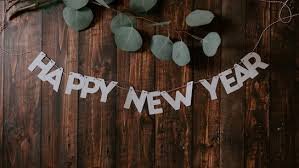
New Year’s Day is more than just the first day of the calendar year. It symbolizes fresh starts, new opportunities, and the chance to set goals for a better future. Celebrated worldwide, this day holds unique significance across different cultures, traditions, and personal practices. Let’s explore the origins, customs, and modern-day significance of New Year’s Day, and how you can make the most of this globally recognized celebration.
The Historical Roots of New Year’s Day
The tradition of celebrating the New Year dates back thousands of years. The earliest recorded festivities honoring a new year are believed to have been held in ancient Mesopotamia around 2000 BCE. These celebrations, known as Akitu, marked the vernal equinox and were tied to the agricultural cycle.
In 46 BCE, Julius Caesar established January 1 as the start of the year in his Julian calendar. This decision was influenced by the month’s namesake, Janus, the Roman god of beginnings, transitions, and doorways. With two faces, Janus was thought to look back at the past and forward into the future, making January an apt time for reflection and new aspirations.
The adoption of the Gregorian calendar in 1582 by Pope Gregory XIII cemented January 1 as New Year’s Day in much of the Western world. Over time, this date has become a universal marker for fresh beginnings, transcending cultural and religious boundaries.
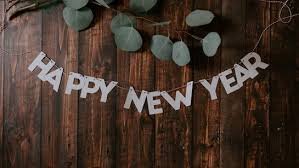
Global Traditions and Celebrations
The ways in which New Year’s Day is celebrated vary widely across cultures. Each tradition reflects local customs, beliefs, and histories:
United States and Western Countries
In many Western nations, New Year’s Eve is marked by parties, fireworks, and countdowns to midnight. In the United States, the iconic ball drop in New York City’s Times Square attracts millions of viewers worldwide. Champagne toasts and singing “Auld Lang Syne” are also popular traditions.
China
Though China celebrates its own Lunar New Year based on the lunar calendar, January 1 is also acknowledged with smaller-scale festivities. Traditional red decorations and family gatherings symbolize good fortune and unity.
Scotland
Scotland’s Hogmanay is a renowned New Year’s celebration featuring fire festivals, torchlight processions, and first-footing—the tradition of being the first person to cross a friend’s threshold in the new year, bringing gifts to ensure good luck.
Japan
New Year’s Day in Japan, known as Shōgatsu, is a time for families to gather, clean their homes, and eat special dishes like osechi ryōri. Bells are rung 108 times in Buddhist temples to cleanse the soul of past sins.
Brazil
In Brazil, many people wear white for peace and make offerings to Iemanjá, the goddess of the sea, by casting flowers into the ocean. This practice is especially common in coastal cities like Rio de Janeiro.
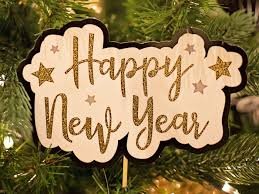
New Year’s Resolutions: A Universal Practice
One of the most ubiquitous traditions associated with New Year’s Day is the making of resolutions. This custom is believed to have originated with the Babylonians, who promised their gods to repay debts and return borrowed items at the start of the year.
Modern resolutions often focus on self-improvement, such as:
- Health Goals: Exercising more, eating healthier, or quitting smoking.
- Financial Aspirations: Saving money, reducing debt, or starting an investment plan.
- Personal Growth: Learning a new skill, reading more books, or traveling.
While many resolutions are abandoned within weeks, they serve as a symbolic way to set intentions and strive for a better year ahead.
Symbolism and Superstitions
New Year’s Day is steeped in symbolism, with various superstitions tied to the belief that the first day sets the tone for the entire year:
- Eating Lucky Foods:
- Black-eyed peas and greens (Southern United States) symbolize wealth and prosperity.
- 12 grapes (Spain and Latin America) are eaten at each stroke of midnight to ensure good luck for the next 12 months.
- Noodles (Asia) signify longevity, provided they are not broken during cooking or eating.
- First-Footing: Common in Scotland and Northern England, the first person to enter a home after midnight is thought to bring good fortune. Traditionally, this visitor should carry gifts such as coal, bread, or whiskey.
- Cleaning and Decluttering: Many cultures believe that sweeping or cleaning on New Year’s Day can sweep away good luck. Instead, homes are cleaned before January 1 to prepare for a fresh start.
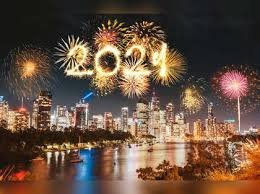
The Role of Fireworks
Fireworks are synonymous with New Year’s celebrations worldwide. Originating in ancient China, fireworks were believed to ward off evil spirits. Today, they symbolize joy, celebration, and the vibrant energy of a new beginning. Iconic displays can be seen in cities like Sydney, London, and Dubai, lighting up the skies in dazzling patterns.
Modern-Day Significance
In today’s fast-paced world, New Year’s Day offers a rare moment for reflection and renewal. It’s a chance to pause, take stock of achievements and challenges, and set the stage for the year ahead. Beyond personal resolutions, it’s also a time for community and global unity, as people from all walks of life share in the hope for a brighter future.
How to Make the Most of New Year’s Day
1. Reflect on the Past Year
Take time to review the highs and lows of the previous year. Journaling or creating a gratitude list can help you appreciate your accomplishments and learn from challenges.
2. Set Achievable Goals
When making resolutions, focus on realistic and specific goals. Break them into smaller steps to make them more manageable. For example, instead of saying, “Get fit,” aim for “Exercise three times a week.”
3. Celebrate Mindfully
Whether you’re attending a party or spending the day at home, choose activities that bring you joy and align with your values. Avoid the pressure to overindulge or overspend.
4. Connect with Loved Ones
New Year’s Day is a wonderful time to reconnect with family and friends. Share your hopes for the year ahead and express your gratitude for their presence in your life.
5. Practice Self-Care
Start the year by prioritizing your well-being. This could mean meditating, enjoying a favorite hobby, or simply taking a quiet walk in nature.
New Year’s Day in the Digital Age
Technology has transformed how we celebrate and share New Year’s Day. Social media platforms allow people to connect with loved ones across the globe, sharing photos, messages, and live updates. Virtual celebrations, online countdowns, and digital fireworks displays have become increasingly popular, especially in recent years.
Apps and tools also help people stay accountable to their resolutions. Fitness trackers, budgeting apps, and habit-forming tools can provide motivation and track progress throughout the year.
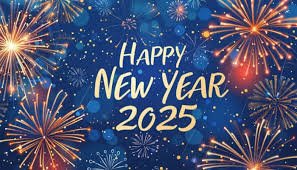
Sustainability and New Year’s Celebrations
As awareness of environmental issues grows, many are choosing to celebrate New Year’s Day in more sustainable ways:
- Opting for eco-friendly fireworks or laser light shows.
- Reducing waste by using reusable decorations and servingware.
- Supporting local businesses and choosing sustainably sourced party supplies.
Conclusion
New Year’s Day is a powerful symbol of hope, renewal, and shared humanity. Whether you choose to celebrate with traditions passed down through generations or create new ones of your own, this day offers an opportunity to embrace the possibilities of the future. By reflecting on the past, setting meaningful goals, and fostering connections, you can make the most of this special time and set the tone for a fulfilling year ahead.
